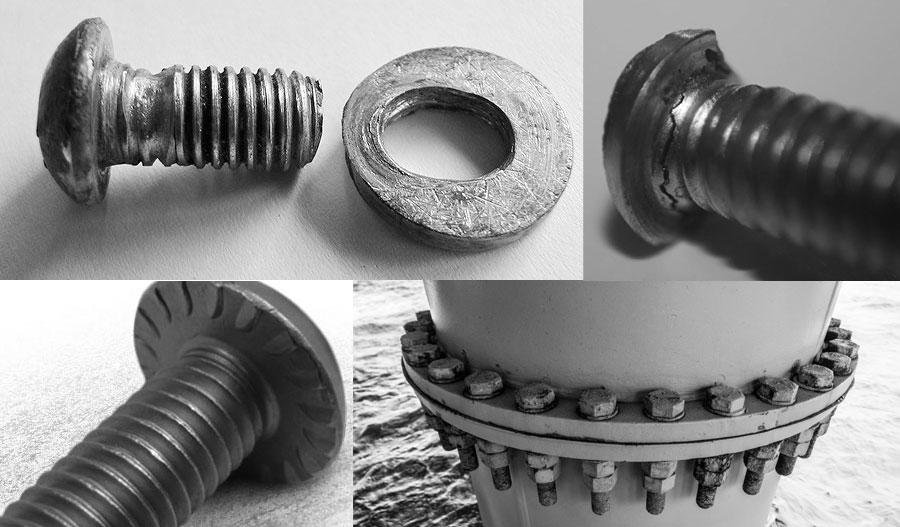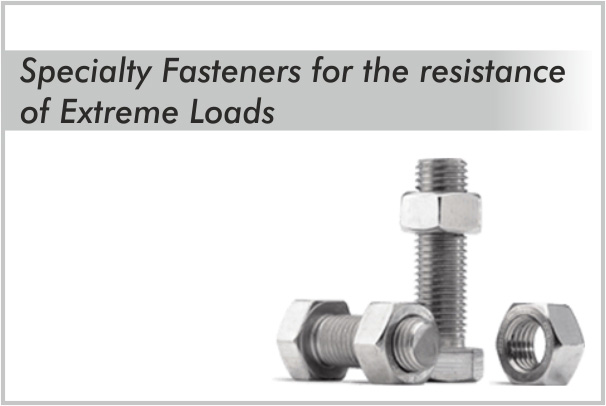If a structure is designed to withstand the extreme load, the load is transferred to fasteners that connect it to other building fasteners, Structure is subjected to brief loads far higher than normal operating loads. Risks include- Hurricane, tornado, and windblown missile impact, Earthquake, tsunami, landslide, avalanche, Industrial accidents and vehicular collisions, Load redistribution due to failure of building elements, Explosion, including boiler, natural gas leaks, attack Located near possible targets etc.
If there is a reason to suspect a risk, design for it.
Determination of Risk- Estimate Risk Loads- Risk Resistant Design
Ductile fasteners can deform to absorb some load while maintaining a connection. If fasteners are brittle, extreme loads can cause them to fail. affect all building components, not just using ductile, HASCC-resistant structural member fasteners help assure full design strength of fasteners can be used to resist extreme loads.
Different types of loads that can occur in a structure
Extreme loads
During extreme loading, structures are briefly subjected to loads far higher than normal operating loads. Risks can include Hurricane & Tornado, including windblown missile impact, Earthquake, Accidents, including industrial accident, vehicular collision, etc. Redistribution of load due to failure of other building elements Explosion, including boiler, natural gas leaks, and attack.
Hurricane and Tornado Loads
High-speed winds create extreme atmospheric pressure differentials between the interior and exterior of building enclosures. High-velocity, windblown missiles create extreme impact loads.
Blast (Explosion) Loads
Blast resistance should be designed into structures, containing volatile materials. With a high-security profile, with strategic importance to an organization or mission and that are or have occupants considered etc. Blasts also occur due to gas leaks, boiler malfunction, and accidents.
Extreme Loading-Building Envelope
Hurricane, tornado, and exterior blast loads are applied first to building cladding and fenestration. These elements either absorb the load – by deformation or failure – or transfer load to other structural elements
Seismic Loading
Violent, cyclical accelerations place extreme loading on all building components, not just structural members. Failures of non- structural elements can injure or kill people and make buildings unusable.
Extreme Loading of Fasteners
Under extreme loading, if a structural element does not fail, and it does not deform sufficiently to absorb all the load energy – that is, if it is designed to withstand the load – then the load is transferred to the fasteners that hold it in place and connect it to other structural elements. If the fasteners are ductile in nature, they will deform, absorbing some or all of the blast or impact energy, but may still keep in place the element they are attaching. If fasteners are brittle, extreme loading may cause them to fail.
The outer layer of case-hardened fasteners is brittle and less ductile. Under extreme loads, the brittle outer case fails first, leaving the inner core to bear load. Even though the core may be ductile, its smaller area can become overloaded and fail. Fasteners with incipient HASCC are even more likely to fail during extreme loading.
Using ductile, HASCC-resistant fasteners helps assure full design strength of fasteners can be used to resist extreme loads.
Different types of fasteners for heavy loads
Specifying concrete and masonry anchors also require consideration of dissimilar metals and corrosion resistance. A variety of special designs are available to satisfy most construction requirements.

Pressure-Relief Fasteners
In buildings with potential for interior explosions, special panels can be designed to blow off and relieve pressure, a built-in safety valve. Examples include places where highly volatile liquids are in use, or storage for extremely fine dry, materials subject to dust-explosion.
Pressure-relief panels are not actually held in place by fastener heads. Panels have an attachment- hole larger than the fastener-head, and a special aluminium washer retains the panel in position.
Under explosive pressure, washers fail and allow panels to blow off, venting the pressure. The panel is loosely tethered to keep it from becoming a dangerous missile. HASCC-resistant fasteners can be used in assembly.
Threaded rods
Threaded rods are used to support fire-sprinklers and other essential building services. These fasteners simplify installation while protecting against potential failures of other fastening methods that are not positively engaged in the structural materials.
Sealing Washers
Special head design plus high-performance washer material help prevent leaks through building envelopes.
Conclusion
HASCC can cause sudden, catastrophic failures when self-drilling or self-tapping screws are used in conditions with dissimilar metals and the potential for exposure to moisture. It is not safe to assume that contractors will be aware of these issues and will select anything other than standard fasteners. Specify accordingly. Selectively hardened and bi-metal self-drilling fasteners mitigate risk because their load- bearing sections remain ductile and less vulnerable to HASCC.
A/Es must be aware of their professional responsibility to specify fasteners that fulfil design intent and provide safe and durable connections.
The lowest cost fastener may not be the most economical when labour and service life are considered. Specialty fasteners can sometimes save money by providing lower installed cost. Fasteners are less than 2% building cost, but specifying inadequate fasteners can cause up to 100% of construction defect costs.
A/Es have professional responsibility to specify fasteners that fulfil design intent and provide safe and durable connections. It is not safe to assume that contractors will be aware of these issues and will select anything other than standard fasteners. Specify accordingly!


